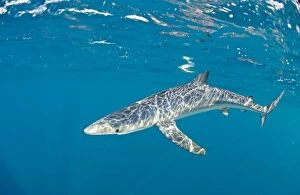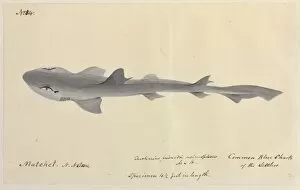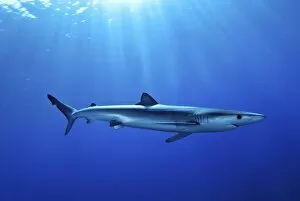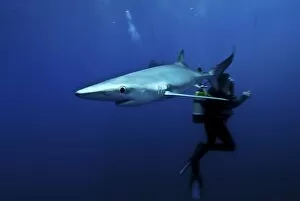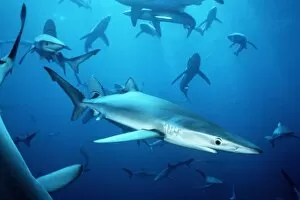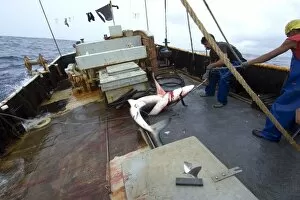Prionace Glauca Collection (#2)
"Discover the Majestic Prionace Glauca: The Blue Shark" The Prionace glauca, commonly known as the Blue Shark
For sale as Licensed Images
Choose your image, Select your licence and Download the media
"Discover the Majestic Prionace Glauca: The Blue Shark" The Prionace glauca, commonly known as the Blue Shark, is a magnificent creature that roams the depths of the Atlantic Ocean. With its sleek and streamlined body, this species captivates both scientists and nature enthusiasts alike. One of its notable companions in these waters is the largetooth sawfish (Pristis microdon), but it also forms unique partnerships with Pilot fish (Naucrates ductor). These small fish often swim alongside the Blue Shark, benefiting from their protection while feeding on parasites that attach to their host's skin. From Pico Island in Portugal's Azores to Halifax in Canada's Nova Scotia, sightings of this awe-inspiring shark are not uncommon. In July, lucky observers have witnessed breathtaking encounters between Blue Sharks and Pilot fish off these coastlines. However, not all encounters are without challenges. Some unfortunate individuals have been caught by fishing hooks, highlighting the threats faced by marine life due to human activities. It serves as a reminder for us to protect these incredible creatures and preserve their natural habitats. With its piercing blue hue and graceful movements through the water, observing a Great Blue Shark up close is an unforgettable experience. Whether viewed from slightly above or seen from an overhead perspective near Penzance in Cornwall or Canary Islands' North Atlantic Ocean respectively - each encounter offers a unique glimpse into their world beneath the waves. As we marvel at these beautiful creatures swimming near the surface of places like English Channel or around Pico Island off Portugal's coastlines - let us remember our responsibility towards conservation efforts. By safeguarding their environment and promoting sustainable practices, we can ensure future generations continue to witness such mesmerizing sights gracefully navigating our oceans.

